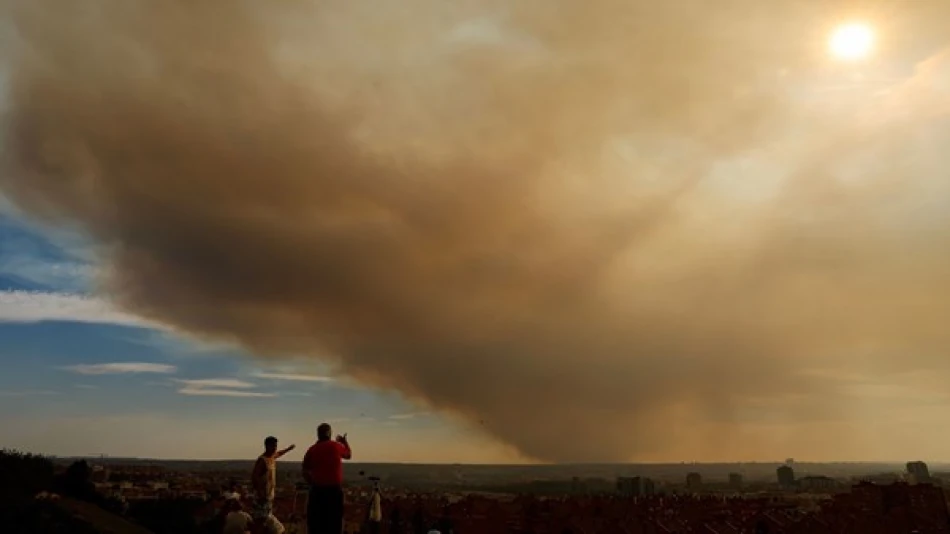
Massive Fire Engulfs Spanish Capital in Thick Smoke, Sparking Safety Concerns
Madrid Chokes on Smoke as Massive Wildfire Exposes Spain's Growing Climate Vulnerability
A devastating wildfire that erupted near Madrid has consumed over 3,100 hectares and blanketed Spain's capital in thick orange smoke, forcing residents indoors and highlighting the country's escalating battle against climate-driven wildfires. The blaze, which broke out Thursday evening just 50 kilometers southwest of the city, required deployment of over 100 firefighters and military emergency units as authorities warned that strong winds could complicate containment efforts.
Emergency Response Mobilizes as Capital City Shrouded in Smoke
Madrid's regional governor Isabel Díaz Ayuso confirmed the fire's massive scale through social media, while emergency services cautioned that the blaze remained uncontained as of Friday morning. The city's civil protection agency issued urgent recommendations for residents to remain indoors and wear masks to avoid inhaling ash particles as the distinctive orange-gray smoke cloud engulfed urban areas.
The rapid mobilization of military units alongside civilian firefighters underscores the severity of the situation. Spain's emergency response protocols have evolved significantly since the devastating 2017 fires that killed over 40 people, with authorities now deploying coordinated military-civilian teams more quickly than in previous decades.
Climate Change Transforms Spain's Fire Season
While the exact cause of this latest blaze remains under investigation, the incident fits a troubling pattern across Spain. The country now experiences significantly hotter summers due to human-driven climate change, extending both the duration and intensity of wildfire seasons. This transformation has turned what were once manageable seasonal risks into year-round threats requiring constant vigilance.
Data from the European Forest Fire Information System reveals that wildfires have already consumed more than 25,000 hectares across Spain this year alone. This figure represents a substantial increase compared to historical averages and places Spain among the most fire-affected nations in the European Union.
Economic and Infrastructure Impact
The Madrid fire forced closure of a major highway in the region, disrupting supply chains and commuter traffic before reopening Friday as conditions improved. Such infrastructure disruptions carry significant economic costs, particularly for a metropolitan area that serves as Spain's financial and logistics hub.
The incident also raises questions about urban planning and emergency preparedness as Spanish cities grapple with increased wildfire risks. Unlike countries such as Australia or California, which have developed extensive wildfire-urban interface management systems, Spain's approach remains largely reactive rather than preventive.
Regional Recovery Begins
By Friday, communities near the fire's epicenter began returning to normal operations as skies cleared and emergency teams gained better control over the situation. However, the rapid recovery should not obscure the underlying vulnerability that made this crisis possible.
Spain's experience mirrors broader Mediterranean trends, where countries like Greece, Italy, and Portugal face similar challenges from intensifying wildfire seasons. The European Union has responded by increasing funding for firefighting equipment and cross-border cooperation, but individual nations must still develop more robust prevention and response strategies.
This Madrid fire serves as another stark reminder that climate adaptation is no longer a future concern but an immediate necessity for European capitals and their surrounding regions.
Most Viewed News

 Layla Al Mansoori
Layla Al Mansoori






